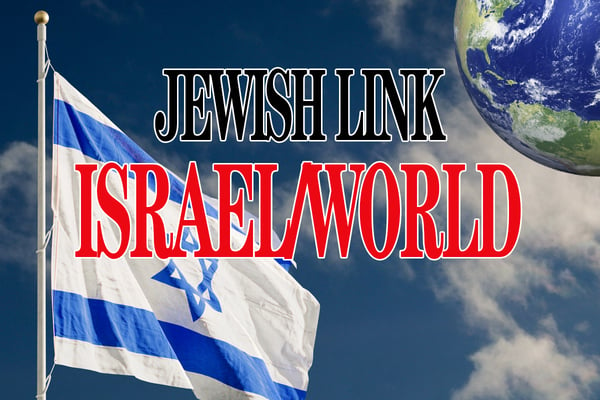In last week’s Parsha, we read about the Plague of Darkness. Rashi explains: “Why did God bring darkness upon the Egyptians? Because there were wicked Jews in that generation who did not want to leave Egypt. They died during the three days of darkness so that the Egyptians would not see their downfall and say, ‘They too are being afflicted, like us.’”
But why did these Jews refuse to leave? The Midrash Tanchuma (Va’era 14) provides an answer: “The Holy One, blessed be He, does not show favoritism and probes man’s heart. There were wicked Jews who had honor and fortune in Egypt. They did not want to leave. The Holy One, blessed be He, said, ‘If I smite them publicly and they die, the Egyptians will say, ‘Just as we are suffering, so are they.’ Therefore, He brought darkness upon the Egyptians.’”
Even in the midst of persecution, some Jews felt at home in exile and rejected redemption. But how many refused to leave? The Midrash Tanchuma interprets “chamushim” (Shemot 13:18) as one-fifth, one-fiftieth, one in five hundred, or one in five thousand. Regardless of the exact number, the message is clear: becoming too comfortable in exile can be dangerous. Redemption requires active participation and the recognition that our ultimate destiny is as a holy nation in our Holy Land.
Faith and Action
Rav Yaakov Kamenetzky, zt”l, expands on Rashi’s comment, emphasizing that not all wicked Jews perished during the Plague of Darkness. Those who died were the ones who actively opposed leaving Egypt, arguing that the bondage was meant to last 400 years. They doubted Moshe and the Elders’ assurances that God had calculated the end of the exile in the merit of the Patriarchs. Their refusal to embrace redemption led to their downfall.
The rest of the Jewish people, though flawed, had the potential for spiritual growth. God foresaw their readiness to stand at Mount Sinai and declare, “Na’aseh v’nishma” (We will do and we will hear).
The Sea of Faith
When the Israelites stood before the Red Sea with nowhere to turn, Moshe prayed to God. Surprisingly, God responded: “Why do you cry out to Me? Speak to the Children of Israel that they should travel” (Shemot 14:15). Rabbi Yissachar Shlomo Teichtal explains that this teaches us an essential lesson: Faith must be accompanied by action. This is reinforced in pesukim 14:22 and 14:29. The Torah twice describes the Israelites’ crossing of the Red Sea “And the Israelites went into the sea on dry ground, the waters forming a wall for them on their right and on their left” (Shemot 14:22). “But the Israelites had marched through the sea on dry ground, the waters forming a wall for them on their right and on their left” (Shemot 14:29)
A subtle distinction exists between these verses. In the first instance, the word chomah (wall) is spelled with a vav,as well as it says they went into the sea first and then there was dry land. While in the second instance, it is written without a vav, resembling chamah (anger) as well as it says they marched through the sea on dry land.The Midrash explains that although Hashem protected Bnei Yisrael, He was also angry with Klal Yisrael because their faith was not yet complete.
This relates to the story of Nachshon ben Aminadav, the nasi (prince) of Shevet Yehuda. According to Chazal, Nachshon jumped into the raging sea before it split, demonstrating absolute faith in Hashem. In contrast, the rest of Bnei Yisrael waited until the waters had already parted. Hashem desired a greater level of faith from them, and their hesitation evoked His displeasure.
In every generation, there are leaders and followers. Some act with unwavering emunah (faith) and vision, willing to take bold and seemingly irrational steps based on their belief in Hashem’s providence. Others follow in their footsteps, but only after the path is clear. Redemption, however, requires initiative; waiting passively is not enough.
The Manna and the Fruits Of Eretz Yisrael
The second half of Parashat Beshalach discusses the manna that sustained the Israelites in the desert “The Children of Israel ate the manna for forty years, until they arrived in an inhabited land. They ate the manna until they arrived at the border of the Land of Canaan.” (Shemot 16:35)
R. Avraham Azulai, in “Chesed LeAvraham,” asks why the manna ceased when the Israelites entered Eretz Yisrael. If God miraculously provided sustenance in the desert, wouldn’t He do so even more in the Holy Land? The standard answer is that the manna was a temporary provision, whereas the ideal is for the Jewish people to sustain themselves naturally in their homeland. However, R. Azulai offers a deeper explanation: Divine Providence in Eretz Yisrael operates differently. In the desert, God bypassed intermediaries and sustained Bnei Yisrael directly. In Eretz Yisrael, the land’s fruits themselves embody holiness and serve the same purpose as manna.
Thus, the manna did not truly cease—it transformed. The produce of Eretz Yisrael is a direct manifestation of God’s care, allowing a more intimate relationship with Him.
The Sanctity of Eretz Yisrael
R. Avraham of Sochatchov, the Avnei Neizer, explains why many Chassidic masters refrained from living in Eretz Yisrael during the 19th and early 20th centuries. Without a means of self-sufficiency, they would have relied on foreign donations, which would undermine the purpose of dwelling in the Holy Land. Today, however, earning a livelihood in Israel is far easier, making the mitzvah of Yishuv Ha’aretz (settling the Land) more attainable.
The fruits of Eretz Yisrael carry kedusha (sanctity), especially during Shemitah. Consuming them connects us to God in a way that mirrors the manna of the desert. Each mitzvah performed with the produce of the land further sanctifies it, creating opportunities for spiritual elevation.
Conclusion
The lessons of the Exodus resonate deeply in our time. Redemption requires both faith and action. Living in Eretz Yisrael allows us to experience God’s providence directly, strengthening our connection to Him. As we celebrate Tu B’Shevat and reflect on the blessings of the land, let us embrace the sanctity and opportunities that Eretz Yisrael offers and take active steps toward our ultimate redemption.
Rabbi Paul Bloom lives in Jerusalem and Edison, New Jersey with his wife, Ettie. He is a retired IBM executive and is currently the CEO of PDB Futurecom International. He is on the Board of Directors of NY/ Israel Chamber of Commerce, Dollar a Day of Raritan Valley and the Israel Inspiration Initiative.









